
KIRKS Spotlight: CELECT Pads & Rotors
Meeting Requirements for The Better Brakes Law 2025
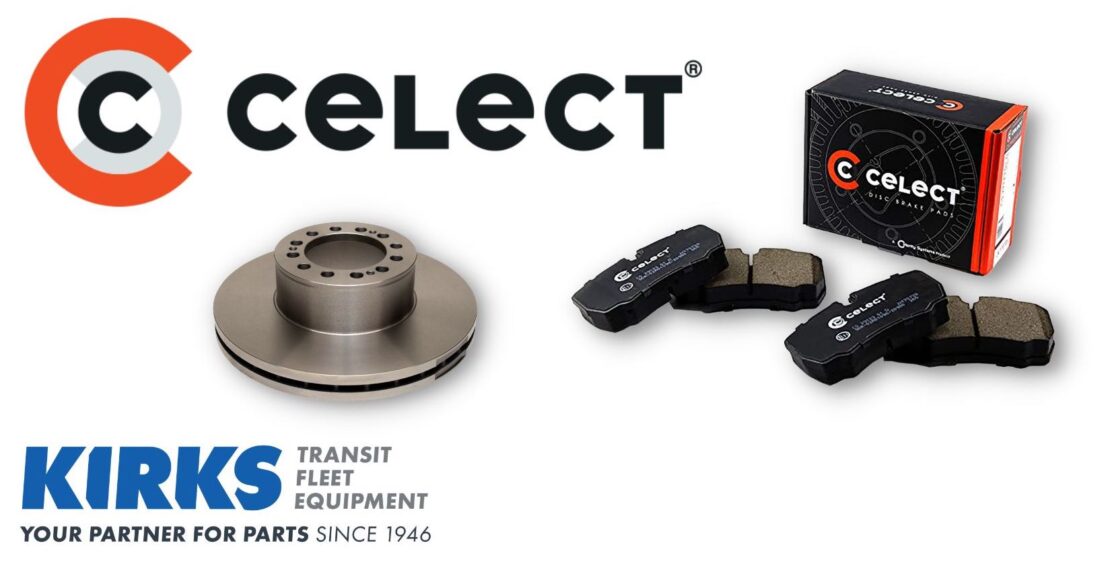
Quality, reliability, availability, and cost are the four top features our team evaluates when selecting the products we source for our customers. Celect Air Disc Brake (ADB) pads and rotors meet our criteria with quality standards, competitive pricing, and exceptional performance.
Recent legislation has moved brake pad manufacturers to develop proprietary solutions that reduce or remove copper and other materials in their composites.
Celect ADB pads and rotors offer solutions for specific applications, including copper-free brake pads. Let’s cover a bit of the background that got us here.
Adapting Buses from Drum & Shoe to Air Disc Brake Systems
Air Disc Brake (ADB) systems were introduced in the automotive industry decades before they were available for transit buses, motor coaches, and other specialized applications. This early adoption in automotive ADB systems meant that manufacturers were positioned to move swiftly to develop products that would meet new regulatory guidelines.
City transit buses with longer life have been slower to adapt to improved air disc brake systems. The sheer size and safety requirements for transit buses and motor coaches—and that buses have a longer life span—has meant that transit organizations needed to maintain older systems of brake drums and shoes.
As older buses are put to pasture, the transition to air disc brake systems is gaining speed, and with that, the need to meet regulatory standards.
High Demands on Brake Systems in Buses
Heavy-duty air brake systems used in large commercial vehicles such as trucks, buses, and trailers rely on compressed air to control the brakes and slow down or stop the vehicle.
These systems are designed to withstand the high demands of heavy-duty vehicles with increased loads that result in higher torque, temperatures, and operate reliably in a variety of weather conditions.
A Brief Overview Air Brake System Components
Air Compressor: The air compressor generates high-pressure air to activate the brake system.
When the vehicle operator presses the brake pedal, the air is released from the brake chamber. This air applies force to the pistons in the caliper, causing the brake pads to clamp down on the rotor and create the necessary friction to slow down or stop the vehicle.
The air compressor, powered by the bus’s engine, draws in outside air and compresses it to high pressure. This compressed air is stored in air reservoirs of the brake system, ready to be used when the brakes are applied.
Calipers: The calipers house the ADB system, including the pistons, pads, and rotors. Calipers are the heart muscle of the braking system, where pads and rotors work together to create friction and slow down or stop the vehicle.
We cover calipers in more detail here: Stopping Power: Air Disc Brake Systems for Transit Vehicles.
Rotors: Rotors, or brake discs, rotate with the wheel and come into contact with the wheel to the degree of pressure the brake pad applies. Rotors are evaluated by thermal fatigue capabilities and resisting corrosion, especially in critical areas.
Pads: Heavy-duty brake pads are made of composite material and are pressed against the rotor to slow or stop the vehicle, generating significant frictional force. The composite must provide the necessary properties for effective braking and durability.
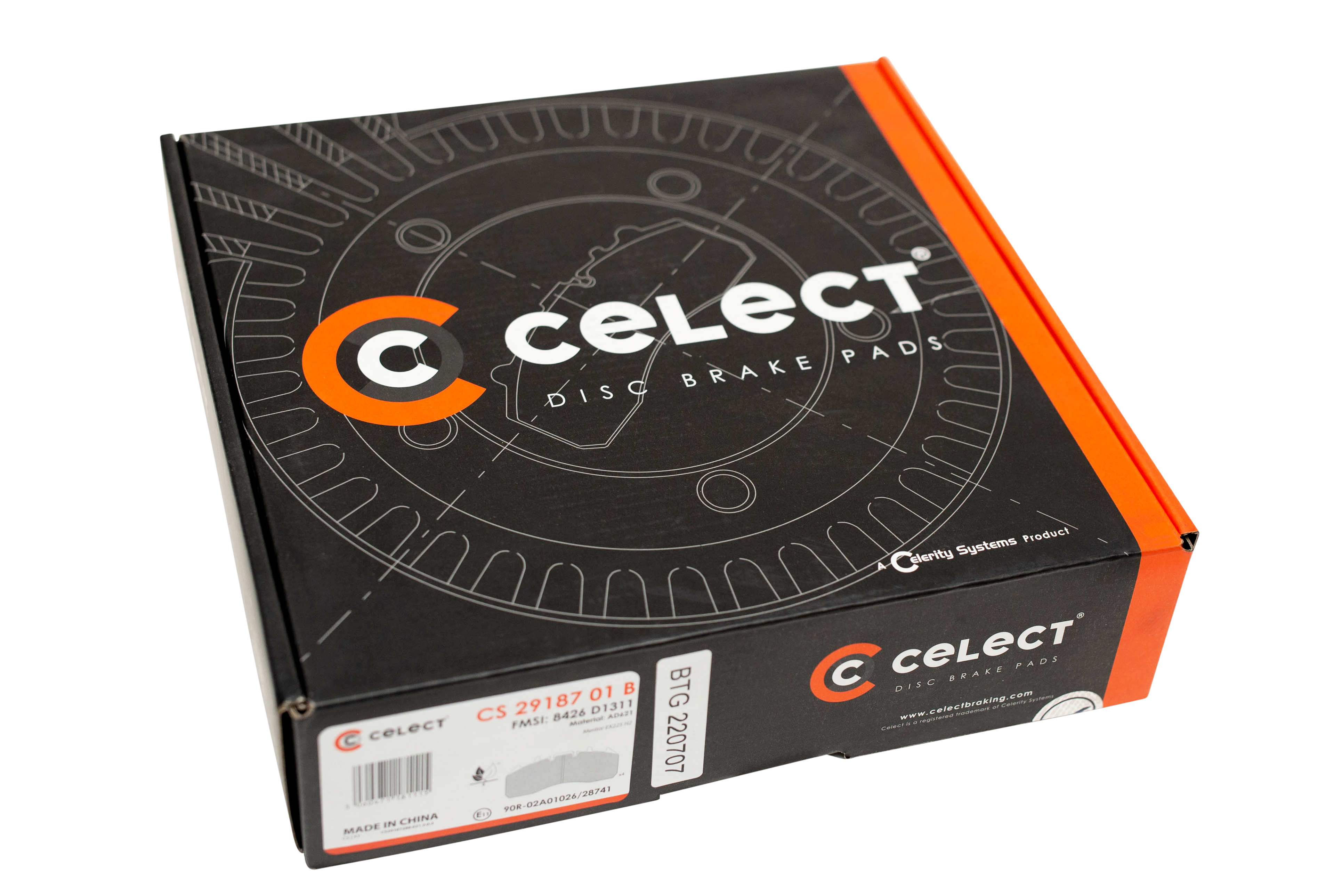
Composite materials found in heavy-duty brake pads fall into four categories:
Ceramic fibers are often used as a reinforcing material in heavy-duty brake pads due to their high strength and ability to withstand high temperatures and improve durability and performance.
Metal fibers, such as steel or copper fibers, can also be used to reinforce the brake pad and improve its strength and durability, and help to dissipate heat generated during braking.
Various fillers, such as carbon, graphite, or other minerals, can be added to the composite material mixture to enhance specific properties, such as reducing noise and vibration, dust and debris buildup, and improving heat resistance.
Organic materials and resins bind the proprietary combinations of fibers and fillers.
ADB pad manufacturers develop proprietary composites focusing on safety, reliability, and prolonging the brake pad’s life. New challenges have come to the industry with environmental impact, leading to copper-free brake pad initiatives.
Friction, Fragments, and Brake Pad Furor
The friction required on the pads and rotors to stop vehicles creates wear. Copper and other metals in brake dust are shed as the pads wear down. These metals fall on roadways and are eventually found in waterways.
Copper is highly toxic to fish, hindering their sense of smell, their ability to return to their spawning streams, and becoming more vulnerable to predators.
“The Washington Department of Ecology reports that “brake pads account for up to half of the copper entering our waterways.”
California and Washington have passed legislation requiring brake pad manufacturers to reduce and eventually remove copper and other designated metals. In 2010, the state of Washington passed what is known as The Better Brakes Law.
The Better Brakes Law 2025
While this legislation impacts manufacturers and consumers who want to sell and purchase brake pads and shoes in Washington, brake pad manufacturing organizations like the Brake Manufacturers Council have joined the initiative to make industry-wide changes. The law outlines goals for reducing designated materials by the year 2025.
Three Leaf Symbol
The Brake Manufacturers Council promotes the Leaf Symbol to inform customers whether a brake pad meets the Better Brakes standards. Each filled “Leaf” represents reduced levels of designated materials.
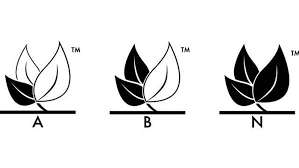
Level A – One Leaf: limits levels of asbestos, cadmium, chromium, lead, and mercury.
Level B – Two Leaves: meets Level A, and copper levels must be less than 5% by weight.
Level N – Three Leaves: meets Level A, and copper levels must be less than 0.5% by weight.
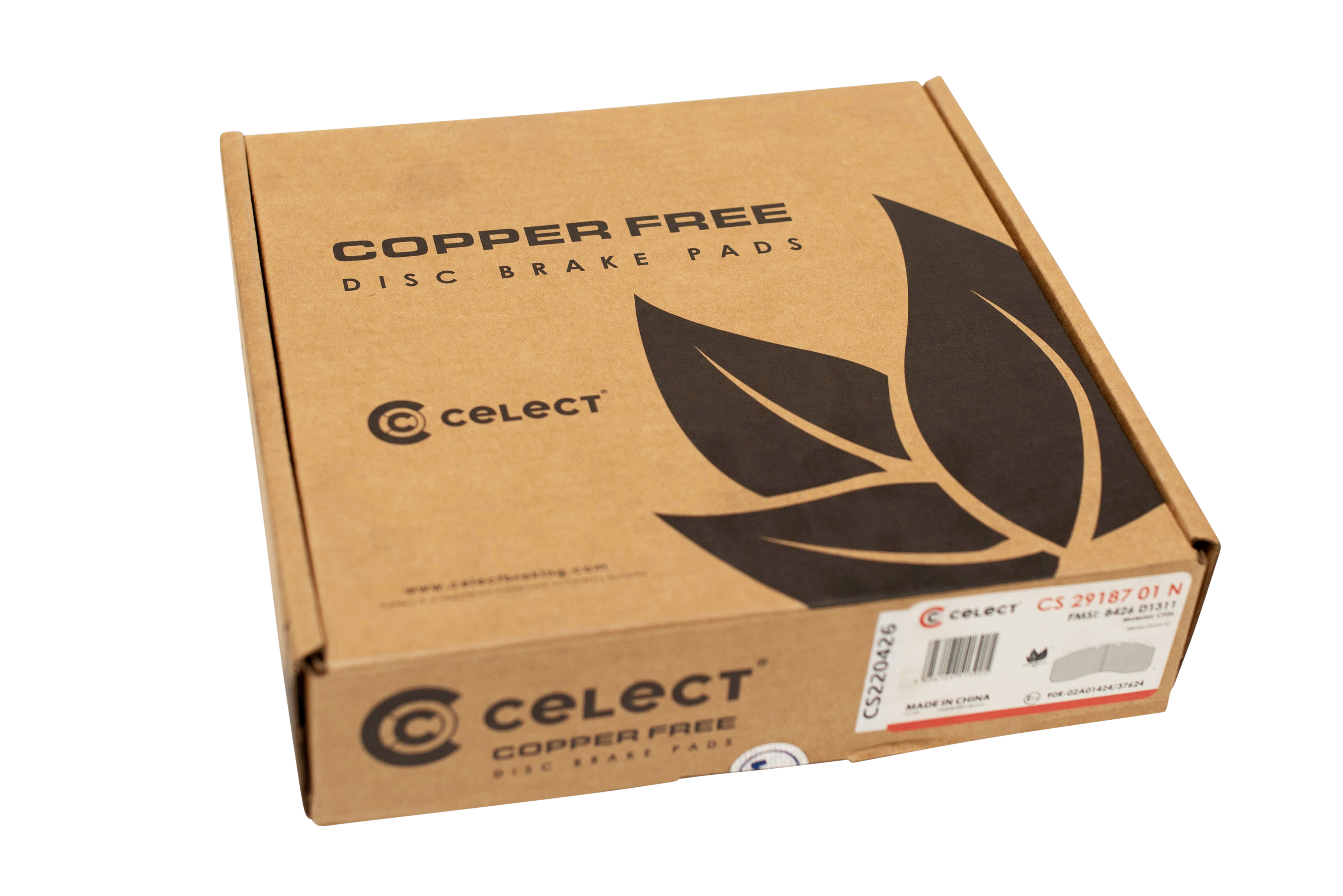
US-based and European brake pad manufacturers have invested in research and development to meet material composite standards to reduce and remove levels without compromising safety, durability, and overall performance.
Celect ADB Pads and Rotors
Celect Brake Pads and Rotors are a superior solution, meeting safety, performance, and environmental requirements in heavy-duty applications.
Celect brake pads are engineered to deliver consistent, reliable braking performance for today’s demanding heavy-duty bus applications and are available in low metallic organic base and copper-free materials.
In use throughout North America and required by the Better Braking Law 2025, Celect Copper-Free Brake Pads will perform with outstanding wear characteristics and maintain high global advanced braking technology standards.
Celect brand products conform with all local legislation and standards. All friction materials and rotors are R90* approved and tested for integrity, performance, and wear and match the performance of leading OE products on all tests.
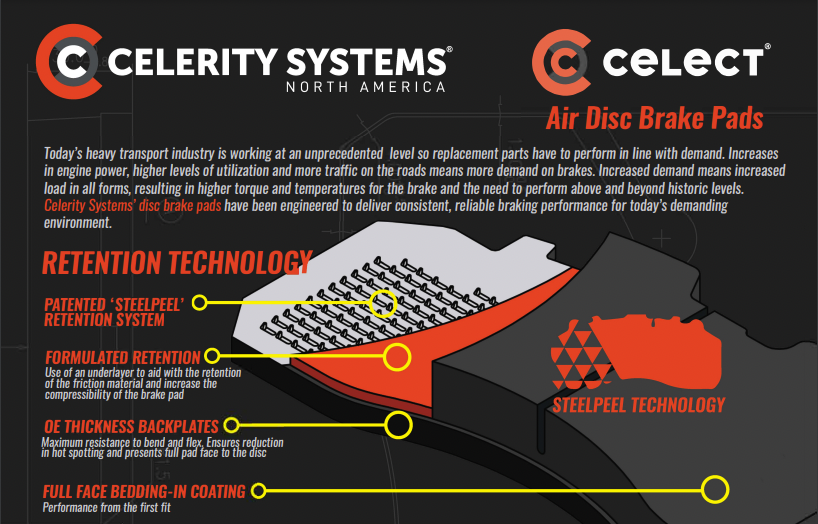
Responding to Requirements and Replacements
With newer buses produced with air disc brake systems, transit, and coach managers can scramble to find replacement parts. They are looking for alternatives in availability, costs, or meeting OEM specifications and regulatory requirements.
KIRKS provides Approved Equal™ CELECT brake pads and rotors that meet new environmental standards, are proven to offer protection levels against rust and corrosion, and deliver reliable performance with vital safety and stopping power.
As your partner for parts, KIRKS sources complete braking solutions for every industry: automotive, heavy-duty truck, industrial equipment, and transit. Get in on the convenience of keeping your entire shop stocked with cost savings on a single purchase order.
We’re here to answer your questions and help you get the products you need. Contact us and talk with a KIRKS product specialist today.
